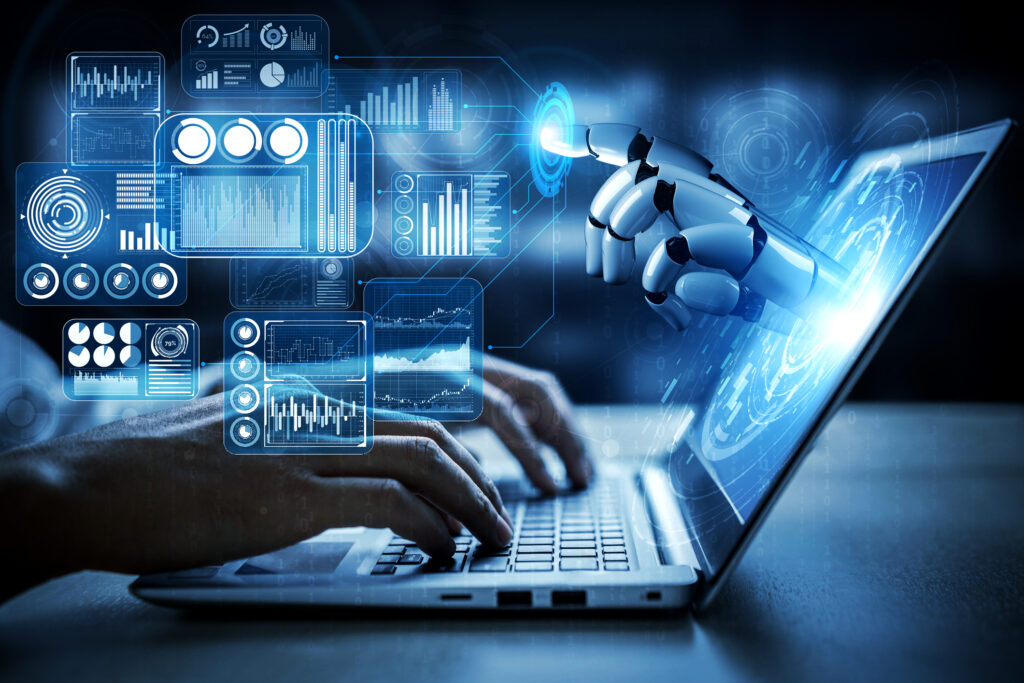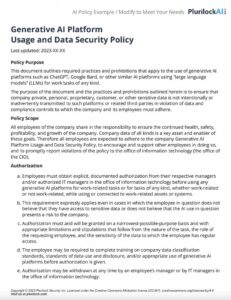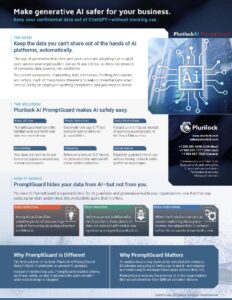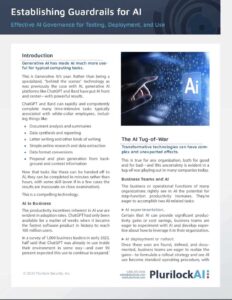In the rapidly evolving landscape of cybersecurity, the integration of Artificial Intelligence (AI) has emerged as a game-changer. As cyber threats become more sophisticated and frequent, traditional approaches to cybersecurity are proving inadequate. AI, with its ability to analyze vast amounts of data, detect patterns, and adapt in real-time, has become a cornerstone in fortifying digital defenses. This deep dive will explore what AI is in the context of cybersecurity, why it matters, and delve into an in-depth analysis of its importance in safeguarding our digital world.
Understanding Artificial Intelligence in Cybersecurity
Definition of AI in Cybersecurity
Artificial Intelligence refers to the simulation of human intelligence in machines that are programmed to think, learn, and problem-solve. In the realm of cybersecurity, AI manifests in various forms such as machine learning, natural language processing, and expert systems. These technologies enable systems to autonomously identify and respond to potential threats without explicit programming.
Machine Learning in Cybersecurity
Machine Learning (ML) is a subset of AI that empowers systems to learn from data and improve their performance over time without being explicitly programmed. In cybersecurity, ML algorithms can analyze large datasets to recognize patterns and anomalies, facilitating the identification of potential threats. This predictive capability is invaluable in staying one step ahead of cybercriminals.
Natural Language Processing (NLP) in Cybersecurity
Natural Language Processing allows machines to comprehend, interpret, and generate human-like language. In the context of cybersecurity, NLP plays a crucial role in analyzing and understanding textual data. This includes parsing through logs, threat intelligence reports, and communication channels to identify and mitigate potential risks.
Expert Systems
Expert systems are AI applications that emulate the decision-making ability of a human expert in a particular domain. In cybersecurity, expert systems can automate routine tasks, enabling faster response times and reducing the burden on human analysts. These systems use rule-based engines and knowledge bases to make informed decisions on security incidents.
Why AI Matters in Cybersecurity
Scale and Speed of Threats
One of the primary reasons AI matters in cybersecurity is the scale and speed of cyber threats. As the digital landscape expands, so does the attack surface. Cybercriminals leverage sophisticated techniques to exploit vulnerabilities, and manual detection and response mechanisms are becoming insufficient. AI, with its ability to process and analyze vast amounts of data at unprecedented speeds, is essential for keeping pace with the evolving threat landscape.
Proactive Threat Detection
Traditional cybersecurity approaches often rely on signature-based detection methods, which are reactive and can only identify known threats. AI, particularly ML, introduces a proactive approach by learning from historical data to recognize patterns associated with potential threats. This enables the identification of previously unknown or zero-day threats, offering a critical advantage in a cybersecurity landscape where new attack vectors constantly emerge.
Adaptive Defense
AI-powered cybersecurity systems possess the capability to adapt and evolve in real-time. Cyber threats are dynamic, and static security measures are easily circumvented by innovative attack techniques. AI systems, through continuous learning and adaptation, can adjust their defense strategies based on the evolving threat landscape. This adaptability is essential in ensuring robust cybersecurity defenses that can withstand the challenges posed by ever-changing attack methodologies.
Reduction of False Positives
False positives, instances where a security system incorrectly identifies a benign activity as malicious, can overwhelm cybersecurity teams and lead to alert fatigue. AI algorithms, with their ability to analyze contextual information and learn from feedback, can significantly reduce false positives. This ensures that security teams can focus their attention on genuine threats, enhancing the overall efficiency of cybersecurity operations.
Automation of Mundane Tasks
AI excels in automating routine and repetitive tasks, allowing human cybersecurity professionals to focus on more complex and strategic aspects of threat mitigation. Tasks such as log analysis, routine vulnerability assessments, and incident response can be efficiently handled by AI-driven systems, freeing up human resources to address high-priority security concerns.
In-Depth Analysis: Importance of AI in Cybersecurity
Advanced Persistent Threats (APTs)
Advanced Persistent Threats (APTs) are prolonged and targeted cyber-attacks conducted by sophisticated adversaries. These threats often go undetected for extended periods, posing a significant challenge to traditional cybersecurity measures. AI, with its ability to continuously monitor and analyze network activities, enhances the detection and mitigation of APTs. ML algorithms can identify subtle patterns indicative of APTs, enabling early intervention and minimizing potential damage.
Zero-Day Exploits
Zero-day exploits target vulnerabilities that are unknown to the software vendor or the cybersecurity community. Traditional security measures struggle to defend against these exploits due to their unpredictability. AI, particularly ML, can analyze system behavior and identify anomalies that may indicate a zero-day exploit. This predictive capability is instrumental in protecting systems from emerging threats before specific signatures or patches are available.
Phishing and Social Engineering
Phishing and social engineering attacks continue to be prevalent, exploiting human vulnerabilities to gain unauthorized access. AI enhances the detection of such attacks by analyzing communication patterns, identifying suspicious content, and recognizing anomalies in user behavior. NLP capabilities enable systems to understand and contextualize communication, making it more challenging for cybercriminals to deceive users through phishing attempts.
Insider Threats
Insider threats, whether intentional or unintentional, pose a significant risk to organizations. AI can monitor user behavior, identifying deviations from normal patterns that may indicate malicious intent. By analyzing user activities, access patterns, and data interactions, AI systems can detect insider threats in real-time, allowing organizations to take proactive measures to mitigate the risks associated with insider attacks.
Adaptive Authentication
Traditional authentication methods, such as passwords, are increasingly vulnerable to compromise. AI-driven adaptive authentication introduces a dynamic and context-aware approach to user verification. By continuously assessing user behavior, location, and device characteristics, AI systems can adapt authentication requirements in real-time. This enhances security by ensuring that access is granted based on a comprehensive understanding of the user’s context.
Threat Hunting and Intelligence
AI facilitates proactive threat hunting by autonomously searching for potential threats within an organization’s network. ML algorithms can analyze vast datasets, including historical threat intelligence, to identify patterns and correlations indicative of potential threats. This proactive approach enables cybersecurity teams to stay ahead of adversaries, identifying and mitigating threats before they escalate.
Cloud Security
As organizations increasingly migrate their infrastructure to the cloud, ensuring robust cloud security becomes paramount. AI plays a crucial role in securing cloud environments by continuously monitoring activities, detecting unauthorized access, and identifying anomalous behavior. The dynamic nature of cloud environments makes traditional security measures less effective, highlighting the importance of AI-driven solutions in maintaining the security and integrity of cloud-based systems.
Challenges and Considerations
While the integration of AI in cybersecurity brings substantial benefits, several challenges and considerations must be addressed:
Bias in AI Algorithms
AI algorithms can inadvertently inherit biases present in the training data. In cybersecurity, this bias can lead to discriminatory outcomes, where certain groups or activities are unfairly targeted or overlooked. Ensuring the fairness and transparency of AI algorithms is critical to maintaining ethical cybersecurity practices.
Adversarial Attacks
Adversarial attacks involve manipulating AI systems by intentionally providing misleading input to deceive the algorithms. In the context of cybersecurity, adversaries may attempt to exploit vulnerabilities in AI-driven security measures. Developing robust defenses against adversarial attacks is essential to ensure the reliability and effectiveness of AI-powered cybersecurity solutions.
Privacy Concerns
The extensive data analysis performed by AI systems raises privacy concerns, especially when monitoring user behavior. Striking a balance between effective threat detection and respecting user privacy is a challenge that requires careful consideration and adherence to privacy regulations.
Skills Gap
The effective implementation and management of AI-driven cybersecurity solutions require specialized skills. The existing skills gap in the cybersecurity workforce poses a challenge, as organizations may struggle to find and retain professionals with the expertise needed to deploy and manage AI technologies effectively.
Conclusion
Artificial Intelligence has emerged as a transformative force in cybersecurity, addressing the evolving challenges posed by cyber threats. The proactive threat detection, adaptive defense mechanisms, and automation capabilities of AI contribute to a more resilient cybersecurity landscape. As organizations continue to embrace digital transformation, the integration of AI becomes not just a strategic advantage but a necessity in safeguarding sensitive data and critical systems. While challenges exist, the ongoing development and refinement of AI technologies, coupled with a commitment to ethical and responsible implementation, will play a pivotal role in shaping the future of cybersecurity. As the digital frontier expands, the synergy between human expertise and AI-driven capabilities will be crucial in defending against the relentless and ever-evolving landscape of cyber threats.
















